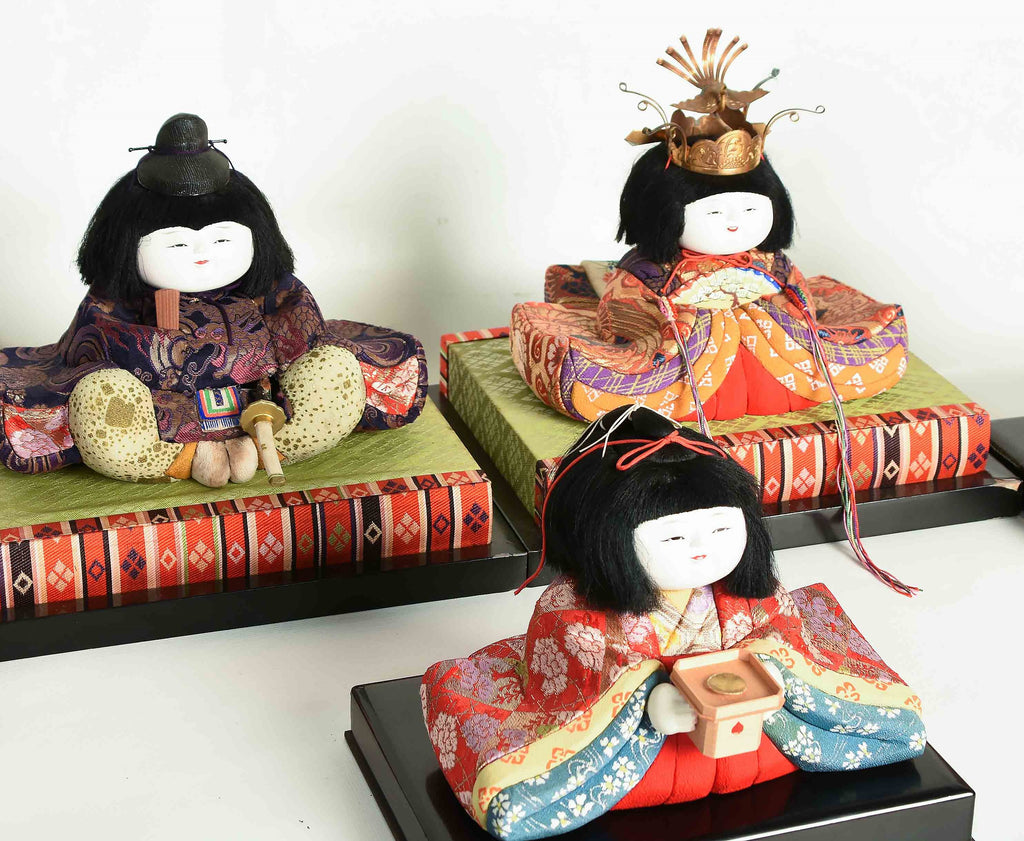Also know as the Doll’s festival or Momo no Sekku (festival of peach blossom), it is celebrated each year on 3 March to pray for the health and happiness of a family’s daughters. Hina ningyo, a set of dolls representing the imperial court, are displayed on a tiered stand, the size and number of which vary from family to family. These dolls are traditionally dressed in the style of the Heian imperial court when the festival began to be celebrated. Hinamatsuri began with dolls placed in baskets, being ceremonially floated down a river, to release bad luck and bring good health to their daughters. It was thought at the time dolls had control of spirits and could thus carry them away. It was during the Edo period that dolls began to be displayed in the home. Throughout Japan, there are many towns and temples displaying these dolls, some of which date from the Edo period and draw large tourist crowds each year.

The display stand for the hinaningyo is carpeted in red and the dolls are ordered hierarchically, with the Emperor and Empress on the first tier at the top, in front of a gold folding screen, byobu, with paper lanterns on either side. On the second tier, are placed the three court ladies, two standing and one sitting, who serve sake and are shown with serving implements. The third tier displays the five musicians, three drummers, a flautist and a singer. Each has an instrument except the singer who carries a fan. On the fourth tier, are two ministers, the Minister of the Right and the Minister of the Left. Placed just below the ministers, on the right is a mandarin tree, on the left, a cherry blossom. They represent the Emperor's bodyguards and have both sword and arrows made with real feather fletchings. The fifth tier has three court protectors. Shiro zake (non-alcoholic fermented rice wine), peach blossom and hishi mochi are placed on the stand with the dolls, as well as miniature furniture and court items from the Heian period such as tansu (storage chests), haribako (sewing box), tea ceremony items and a palanquin.
It is customary for girls to invite their friends for girl’s day parties at home, where special food is prepared and consumed, savoury dishes such as chirashizushi and sweets such a chi chi dango and sakura mochi. At the end of the festival the dolls are packed away immediately as superstition suggests that displays left too long would mean difficulty in marrying their daughters. Grandparents will often buy a set of dolls for a newborn, and these will be displayed each year from mid-February to 3 March, until the child is ten. However due to the expensive cost of the sets, these are often heirlooms passed from generation to generation.







